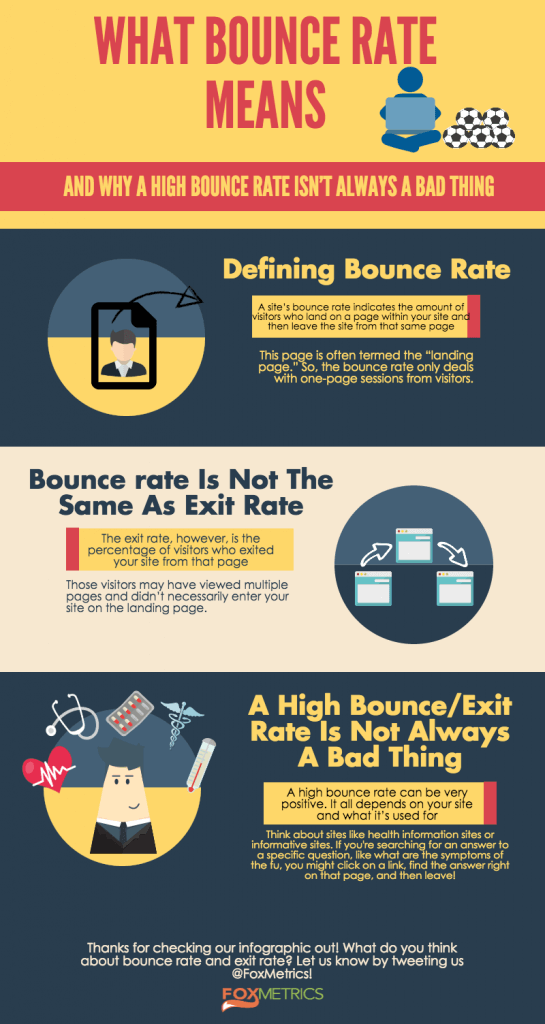A site’s bounce rate indicates the amount of visitors who land on a page within your site and then leave the site from that same page. This page is often termed the “landing page.” So, the bounce rate only deals with one-page sessions from visitors. The exit rate, however, is the percentage of visitors who exited your site from that page. Those visitors may have viewed multiple pages and didn’t necessarily enter your site on the landing page. We want you to leave here smarter about analytics than when you came here, so we must ensure you know this as well: a high bounce/exit rate is notalways a bad thing. In fact, a high bounce rate can be very positive. It all depends on your site and what it’s used for. Think about it. Let’s say you have a site that visitors use to primarily answer specific questions, like WebMD or answers.com. If you want to know what the symptoms of mumps are and you don’t want to go to the doctor, you’re probably going to google “symptoms of mumps” and click on WebMD’s page regarding the issue. There, you’ll see the information you need, read it, and then leave. By doing so, you just increased WebMD’s bounce rate. But, it’s not a bad thing for WebMD. You came to the site, got what you needed, left satisfied, and will be back again for your next question! So, to summarize, be sure to not confuse bounce rate with exit rate. If you can associate terms like landing pages and one-page sessions with bounce rates, then you won’t go wrong. Now you’re a little smarter (unless you’re an analytics genius!). Let us know what you thought of our post! Leave a comment or tweet us @FoxMetrics.
If you’re thinking of personalizing the experience of your visitors, try FoxMetrics for free and Subscribe to our Newsletter get recent updates and news.

